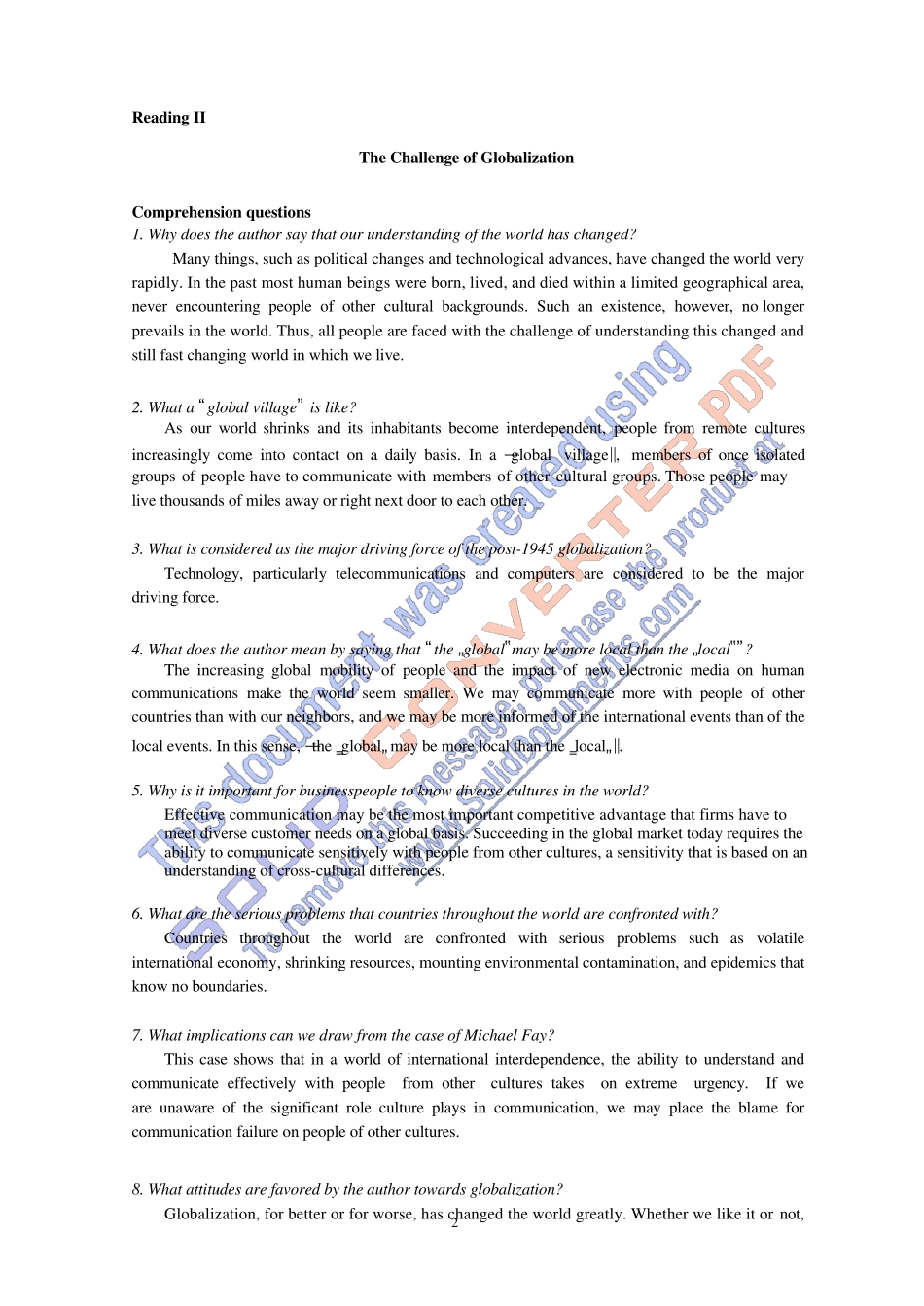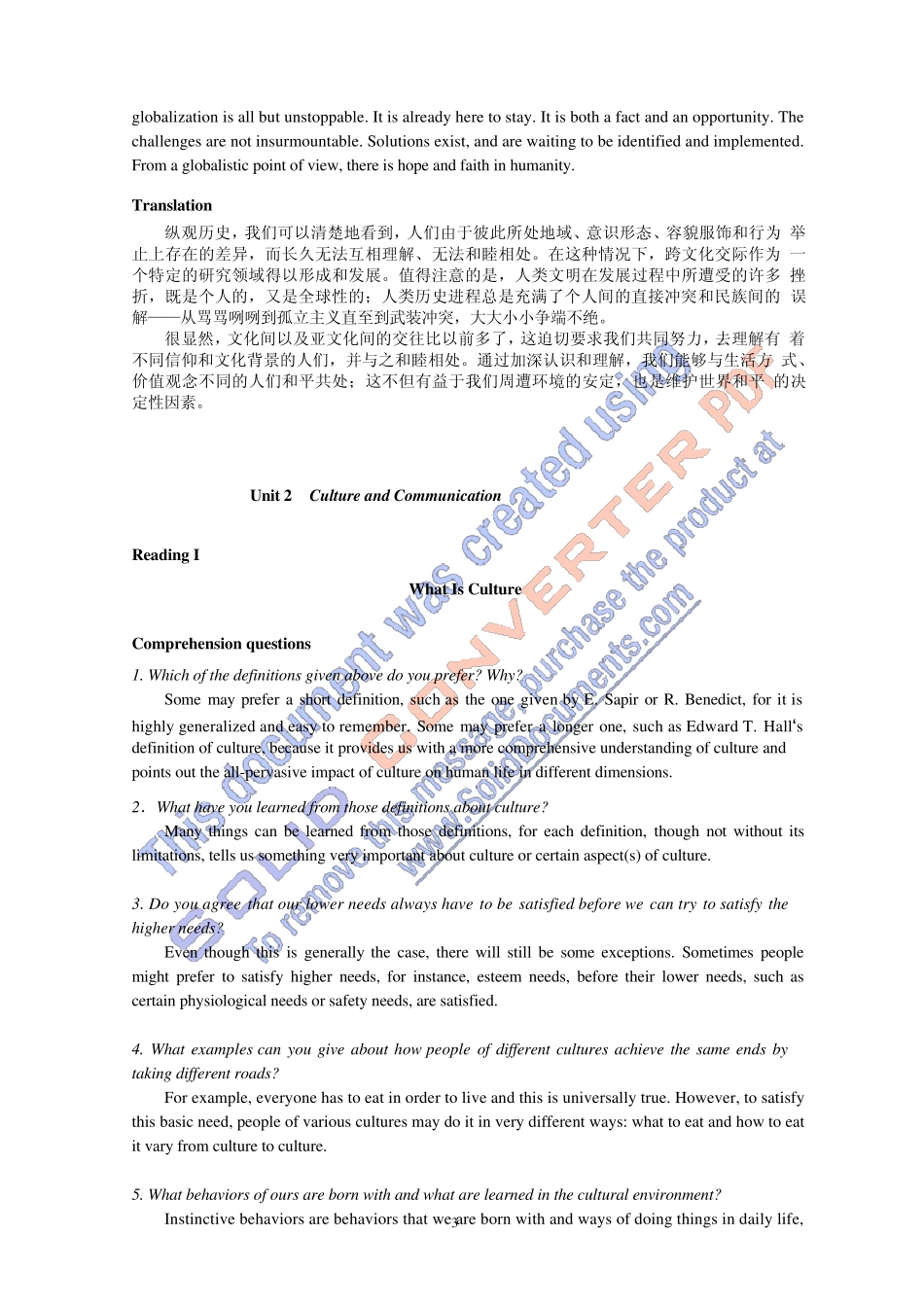1 参考资料 Unit 1 Commu nication Across Cu ltu res Reading I Intercu ltu ral Commu nication:An Introdu ction Comprehension qu estions 1. Is it still often the case that “ everyone‟s quick to blame the alien” in the contemporary world? This is still powerful in today„s social and political rhetoric. For instance, it is not uncommon in today„s society to hear people say that most, if not all, of the social and economic problems are caused by minorities and immigrants. 2. What‟s the difference between today‟s intercultural contact and that of any time in the past? Today„s intercultural encounters are far more numerous and of greater importance than in any time in history. 3. What have made intercultural contact a very common phenomenon in our life today? New technology, in the form of transportation and communication systems, has accelerated intercultural contact; innovative communication systems have encouraged and facilitated cultural interaction; globalization of the economy has brought people together; changes in immigration patterns have also contributed to intercultural encounter. 4. How do you understand the sentence “ culture is everything and everywhere” ? Culture supplies us with the answers to questions about what the world looks like and how we live and communicate within that world. Culture teaches us how to behave in our life from the instant of birth. It is omnipresent. 5. What are the major elements that directly influence our perception and communication? The three major socio-cultural elements that directly influence perception and communication are cultural values, worldview (religion), and social organizations (family and state). 6. What does one‟s family teach him or her ...


